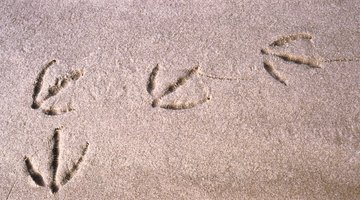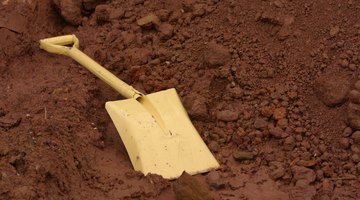How to Find a Spring on Your Property
Springs are naturally occurring sources of water that originate underground and flow to the surface. Spring water may emerge from the ground at a specific point or seep from a large area through the soil. Springs typically originate from either under ground aquifers or surface water.

Things You Will Need
- Shovel
- Topographical map
Tip
Keep in mind that water flows down taking the path of least resistance. Trace springs back from streams and ponds to find their source. Use a topographical map or personally survey the land to determine points where a spring may emerge.
Warning
Use caution, as potentially poisonous snakes also frequent springs in a search for water.
Springs are used as a source for drinking water and a supply for ponds. Locating a spring involves recognizing the signs of a spring and leg work.
-
Identify unusual growths of vegetation. Look for green grass, weeds or shrubs growing in an area which is otherwise dry. A small spring may provide enough water to sustain a small area of lush growth.
-
Observe the area for animal tracks. Animals may converge on a source of water leaving numerous tracks in the area. Follow the general path of the tracks which may lead you to a spring.
-
Inspect muddy or bog areas that do not easily dry. Use a shovel to remove standing water and dig into the muddy soil. Watch for water to seep back into the area, indicating a spring may be present.
-
Observe the number of insects and behavior of birds. Insects typically gather near water and may be more numerous in those areas. Birds will also congregate around water sources especially during early and late times of the day.



References
Writer Bio
Keith Dooley has a degree in outdoor education and sports management. He has worked as an assistant athletic director, head coach and assistant coach in various sports including football, softball and golf. Dooley has worked for various websites in the past, contributing instructional articles on a wide variety of topics.
Photo Credits
- Jupiterimages/Stockbyte/Getty Images
- Jupiterimages/Stockbyte/Getty Images
- Sam Royds/Photodisc/Getty Images
- John Foxx/Stockbyte/Getty Images
- Photos.com/Photos.com/Getty Images
More Articles



